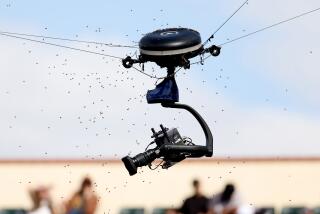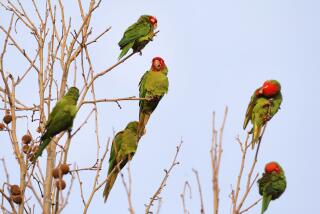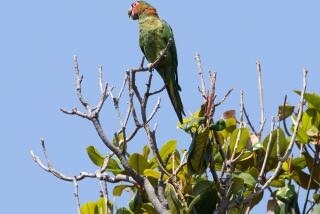WIMBLEDON, England — The emerald grass courts were glistening with dew Monday morning as Rufus the hawk made a big circle, then — like a fighter jet descending on an aircraft carrier — swooped down for a perfect landing on the gloved hand of Wayne Davis.
The All England Lawn Tennis & Croquet Club wouldn’t be open to spectators for a couple of hours, and the Wimbledon ball boys and girls were helping prepare the courts for a day of matches. Those in the flight path of Rufus flinched and ducked as he soared in. Others reached for their phones to capture the moment or maybe grab a selfie before Davis transported the now-tethered hawk to another area of the club.
The transfixed young workers clustered around him like pigeons. And as for the actual pigeons?
Long gone.
Thanks, Rufus.
It’s a tradition that started in 1999 and has become as much a part of these storied two-week championships as strawberries and cream. It isn’t the Ceremony of the Keys at the Tower of London or the grand Trooping the Color at Queen Elizabeth’s recent jubilee celebrations, but this being England, the unleashing of the hawk carries its own sense of tradition, ceremony and spectacle.
Every morning, from 5 to 9, before thousands of spectators enter and play gets underway, the beloved Harris’ hawk flies over the world’s most manicured tennis courts and keeps the pesky nuisance birds away.
“There were loads of pigeons when we started and we sorted that problem out,” said Davis, 59, from Corby in Northamptonshire, a 2½-hour drive north of London. “It’s more of a preventative thing now.”
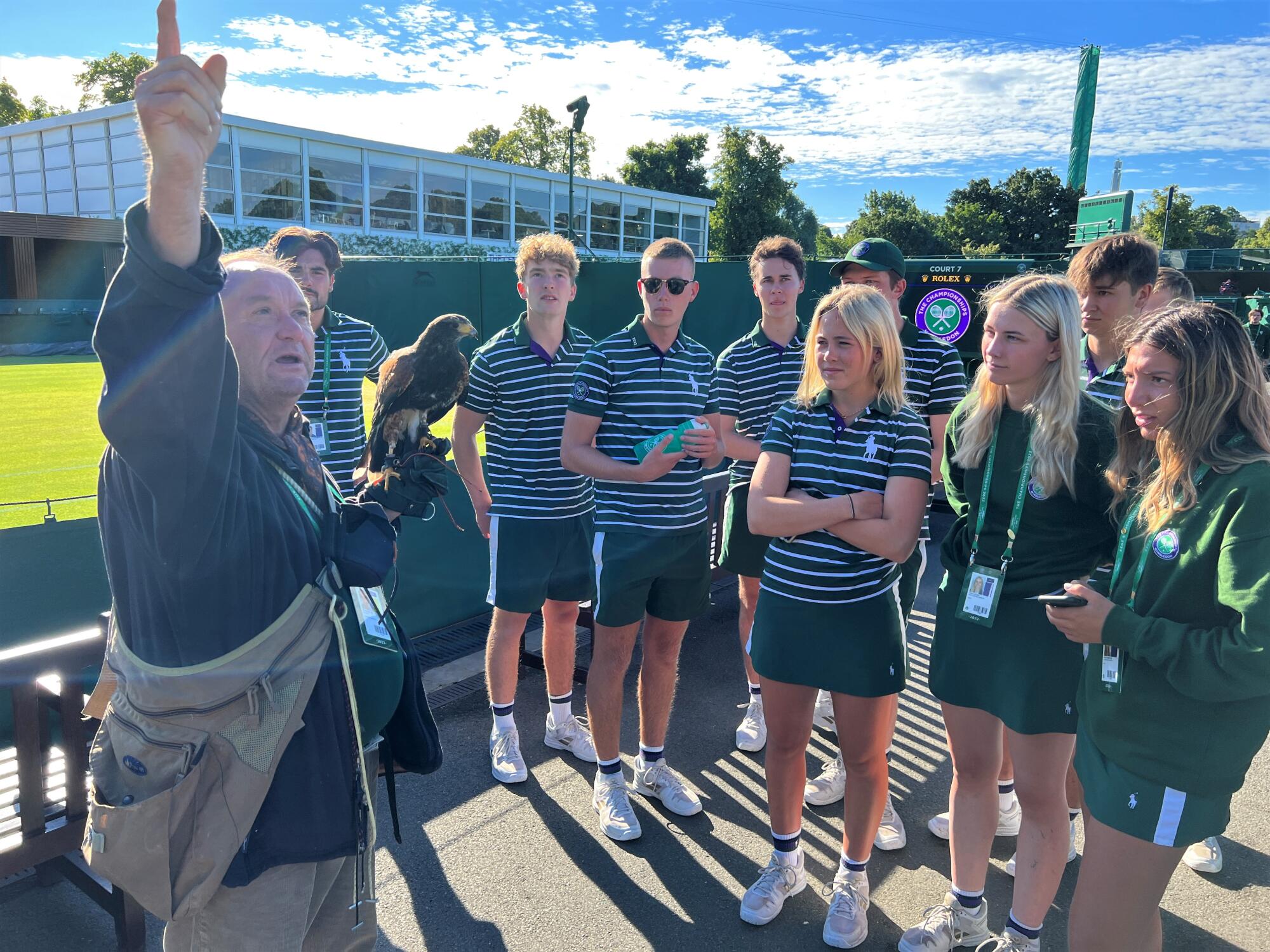
Fifteen-year-old Rufus is nearing the end of his reign, and 3-year-old Horace is waiting in the wings. The original was Hamish. Davis prefers male hawks for the job because they’re smaller and highly nimble, allowing them to dart in and out of the nooks and crannies of the 42-acre grounds. At any given time, Rufus might be perched on the edge of Centre Court’s retractable roof or in a sea of green seats, an oddly wild presence in such a civilized space. Other times, he just disappears.
Rufus is fitted with hawk bells, which tinkle like distant sleigh bells when he’s in the vicinity — you can hear him before you see him — and a tiny GPS tracking device that allows Davis to find him on his phone.
Although he has worked with Davis throughout his life — Rufus began training when he was 15 weeks old — this hawk is no pet, no parrot on a pirate’s shoulder. He’s still a wild animal — that makes him better at his job — and it’s not unheard of for him to fly off for 24 hours or longer, returning only when he’s hungry. Davis keeps a satchel of pigeon parts slung over his shoulder. He can summon his hawk with a sharp, “Hey!” while holding a piece of bird meat in his outstretched hand.
“Hawks are not like dogs,” Davis said. “It’s a different relationship, because dogs respond to a tone in your voice, whereas with hawks and falcons, it’s a much more basic reaction. The hawk is basically a free spirit and I have to work with it.
“If he decides to do something I don’t want him to do — if he sat up on the roof and has had something to eat and didn’t come back — there’s nothing at all I can do. That’s the nature of the relationship. It’s very fragile. And it’s very rewarding, because when he does something good, it’s something special.”
Indeed, Rufus is no corgi, but he and and Davis clearly have an understanding. While others watch from a safe distance — it’s quite something when those big wings start flapping — Davis is comfortable enough to get nose-to-beak with Rufus. With affection.
The 15,000-seat Centre Court venue, with its network of beams lining the ceiling and all the grass seed a bird could want, would be “pigeon heaven,” Davis said. And, in fact, pigeons were a minor distraction for decades. Players occasionally had to shoo them away with their rackets, and bird droppings were an annoyance for groundskeepers.
“I remember occasionally having to reset my ritual on my serve because of a pigeon,” said Pam Shriver, who won 22 titles in Grand Slam events and is now an ESPN broadcaster. “One might be swooping low as you were about to serve. I never had one land on the net or got pigeon poop on me in the middle of a match, which might have brought me good luck.”
For Davis, his love of falconry and ornithology began when he was a child. At 11, he got his first kestrel, bigger than a songbird, smaller than most other birds of prey. That grew into a family business in which hawks and falcons are used to clear airfields for safety, the exteriors of food manufacturing plants, iconic locations such as Westminster Abbey, and for the last 22 years, Wimbledon.
Across the U.K. and the world, people have used many other methods, most of them more modern, to scare off pigeons. There are drones, lasers and auditory devices (plastic owls too, but do those ever work?). Davis prefers the tried-and-true way developed over centuries.
“Falconry has been in England probably since the 8th century and all the way through,” he said. “The lineage is exactly the same. The beautiful thing about it is we train a hawk today exactly as they did 1,300 years ago. It’s always remained a sport of kings, really.”
This isn’t just a once-a-year routine for Wimbledon. Davis and his birds visit the club multiple times per week throughout the year, sometimes working in the afternoon and evening. The key is consistency and letting the pigeons know the threat is real.
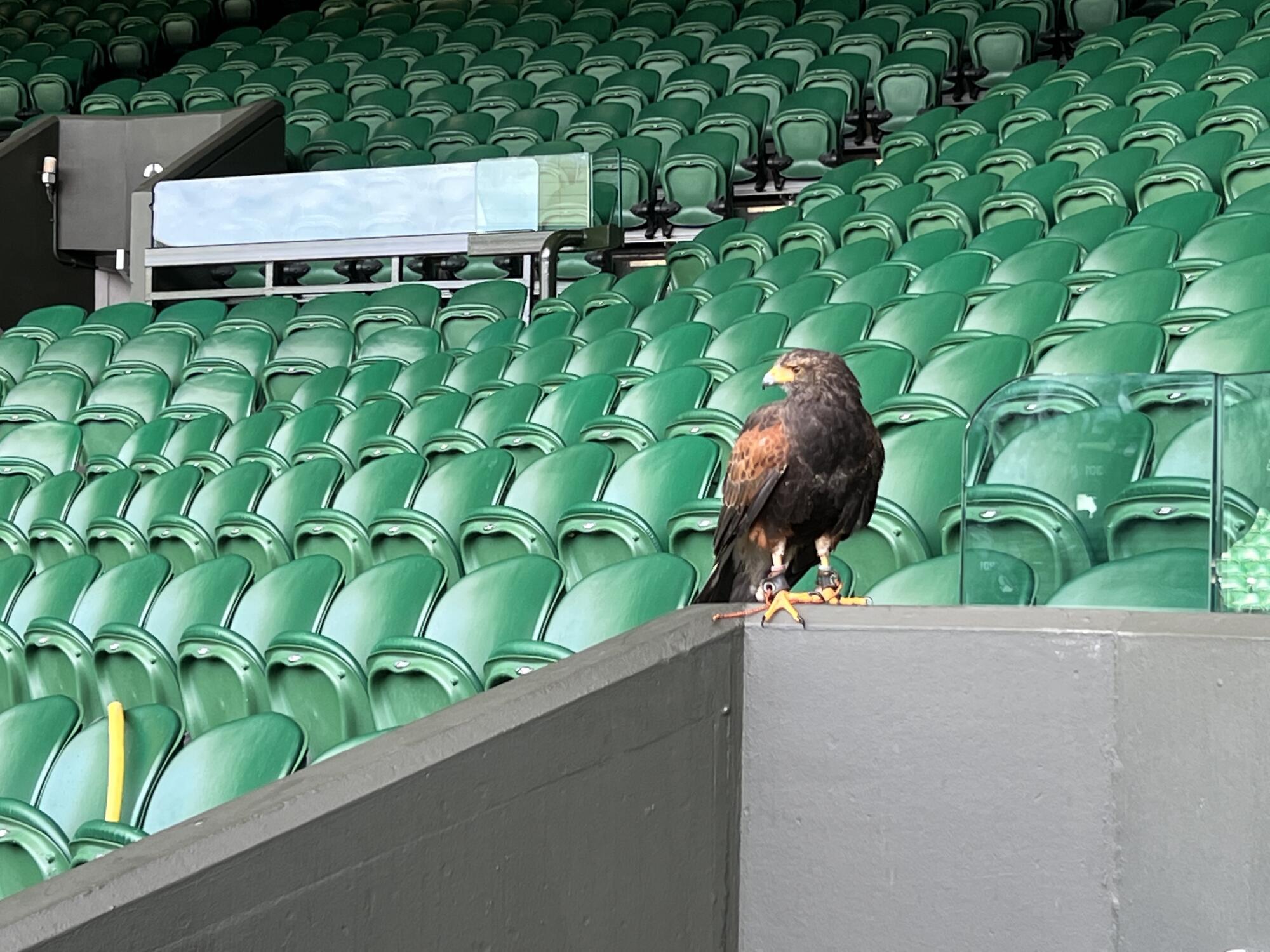
“Birds are very adaptive; if it doesn’t physically affect their well-being, they’ll just ignore it,” Davis said. “You could have a large falcon that would terrify everything, but after a couple days … if it doesn’t physically chase them and try to eat them and kill them, it’s not a threat.”
That said, it would be a problem if Rufus actually succeeded and latched onto his prey on or over the playing surface.
“That’s what I’m trying to avoid, because imagine if he caught one down there on Centre Court,” Davis said. “There would be feathers everywhere, carnage.”
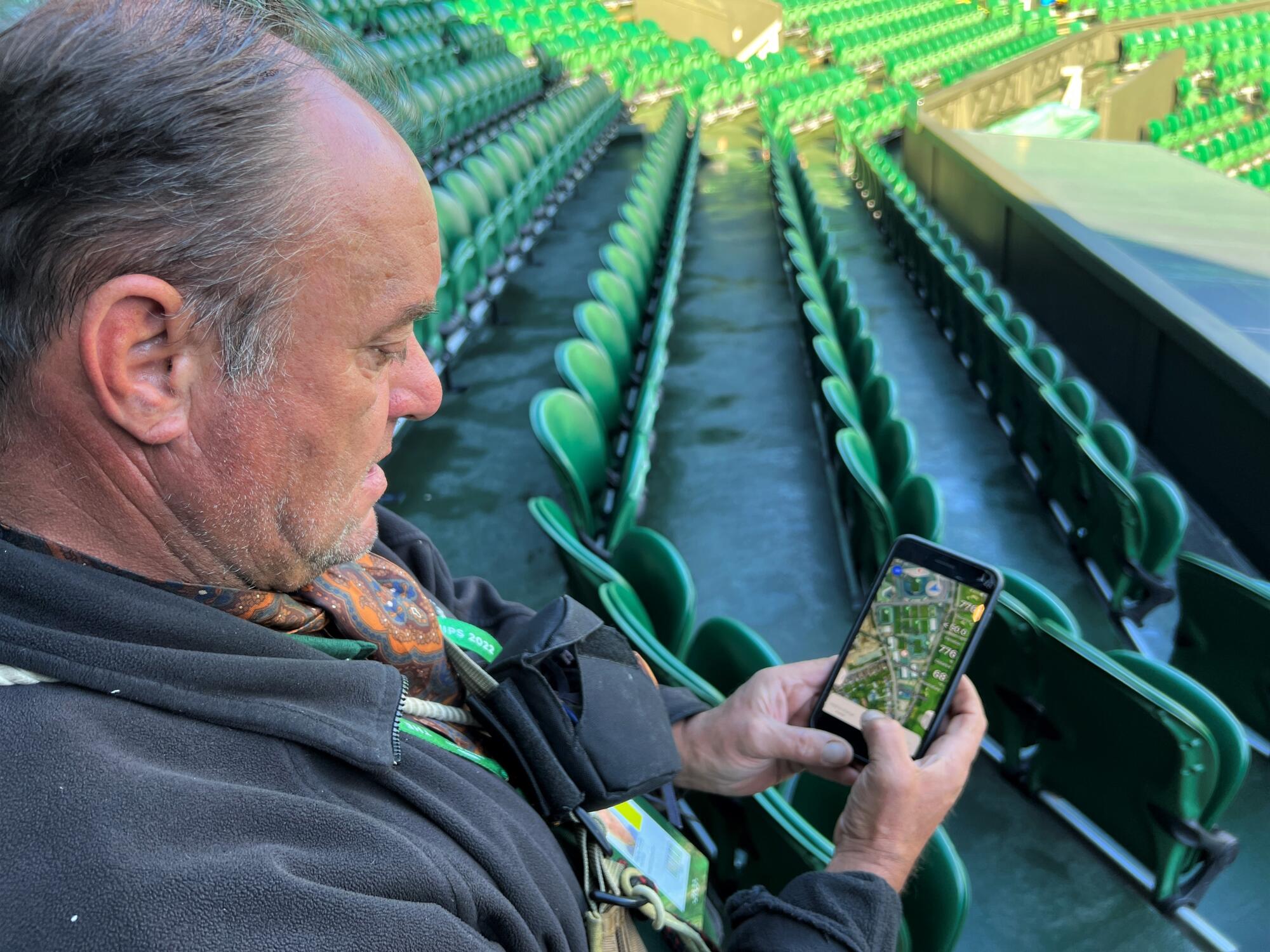
Most of the world’s top tennis players have met Rufus — or vice versa — and Davis almost has to pinch himself at the career he’s created.
“Hey, what more can you say?” he said. “Wimbledon, hawks, nice weather. Perfect.”
Anyplace else is for the birds.
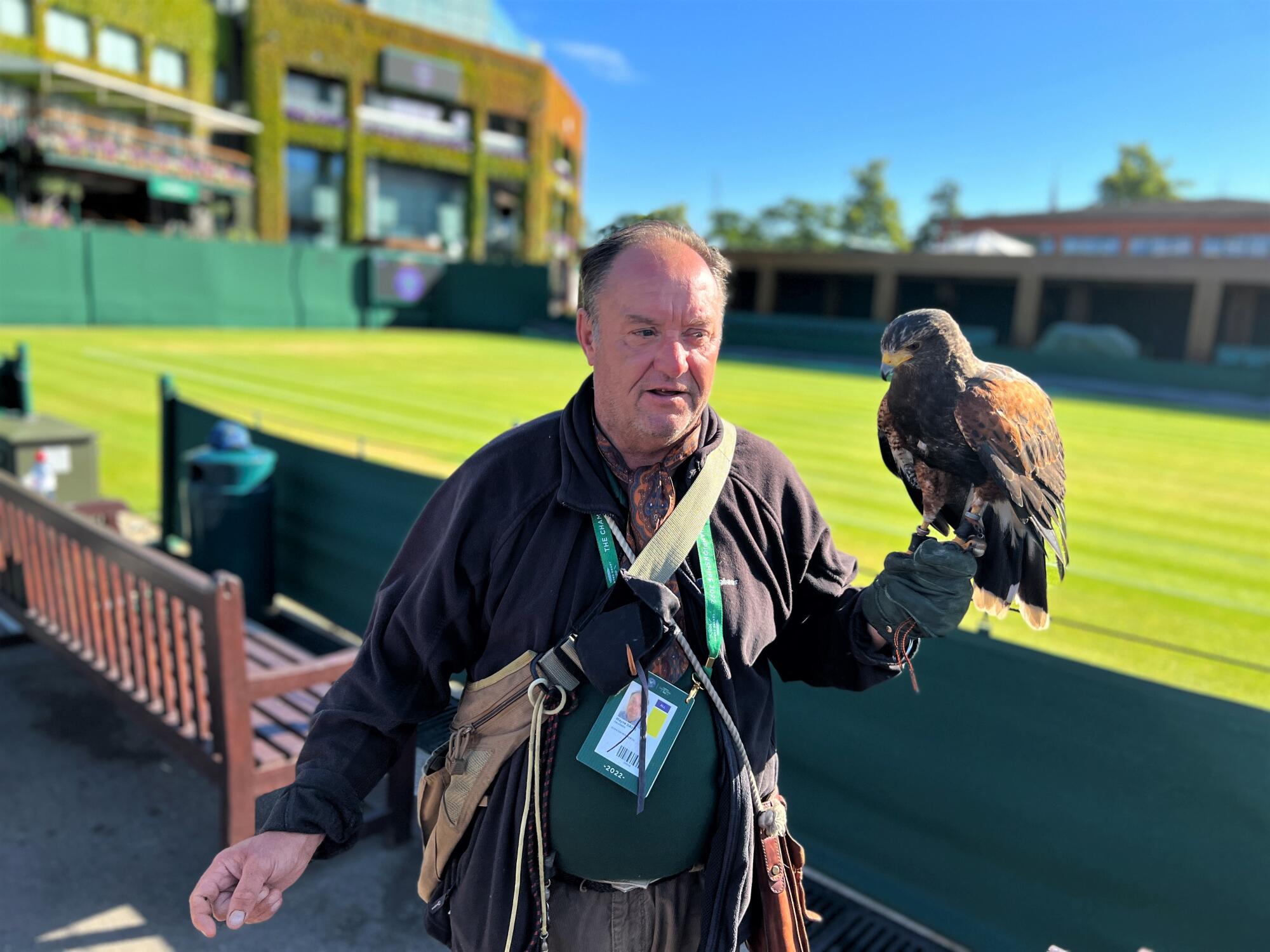
More to Read
Go beyond the scoreboard
Get the latest on L.A.'s teams in the daily Sports Report newsletter.
You may occasionally receive promotional content from the Los Angeles Times.


